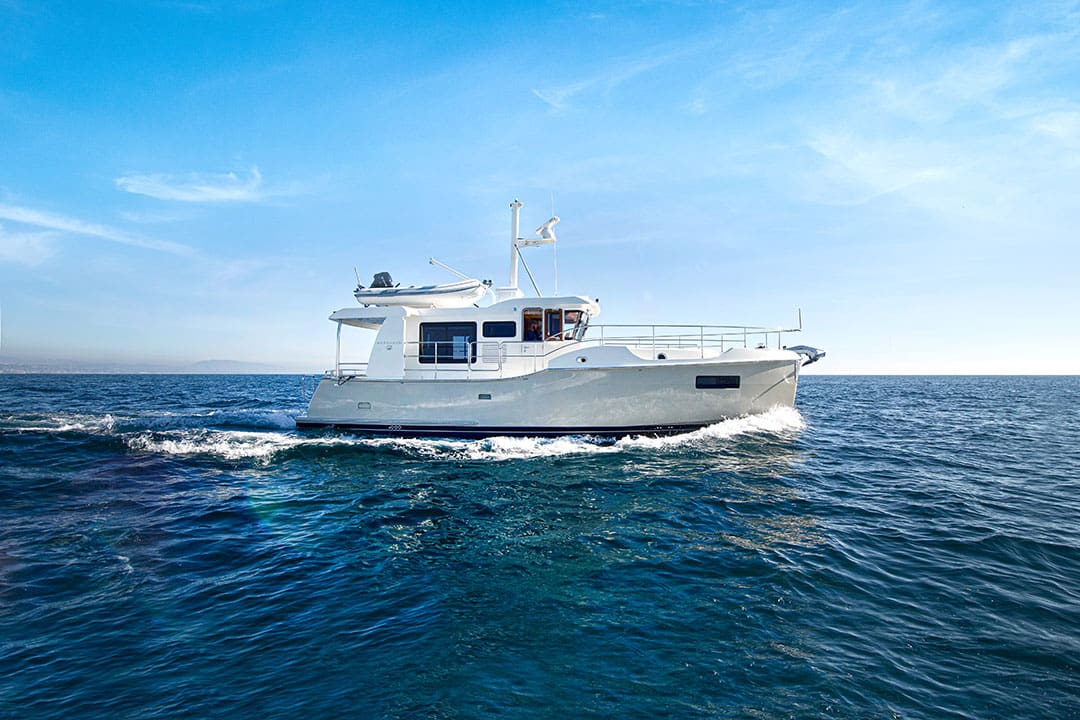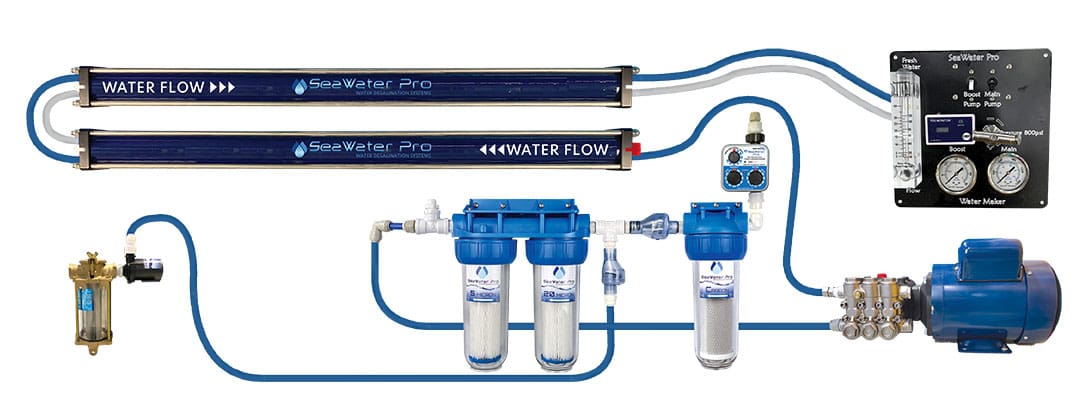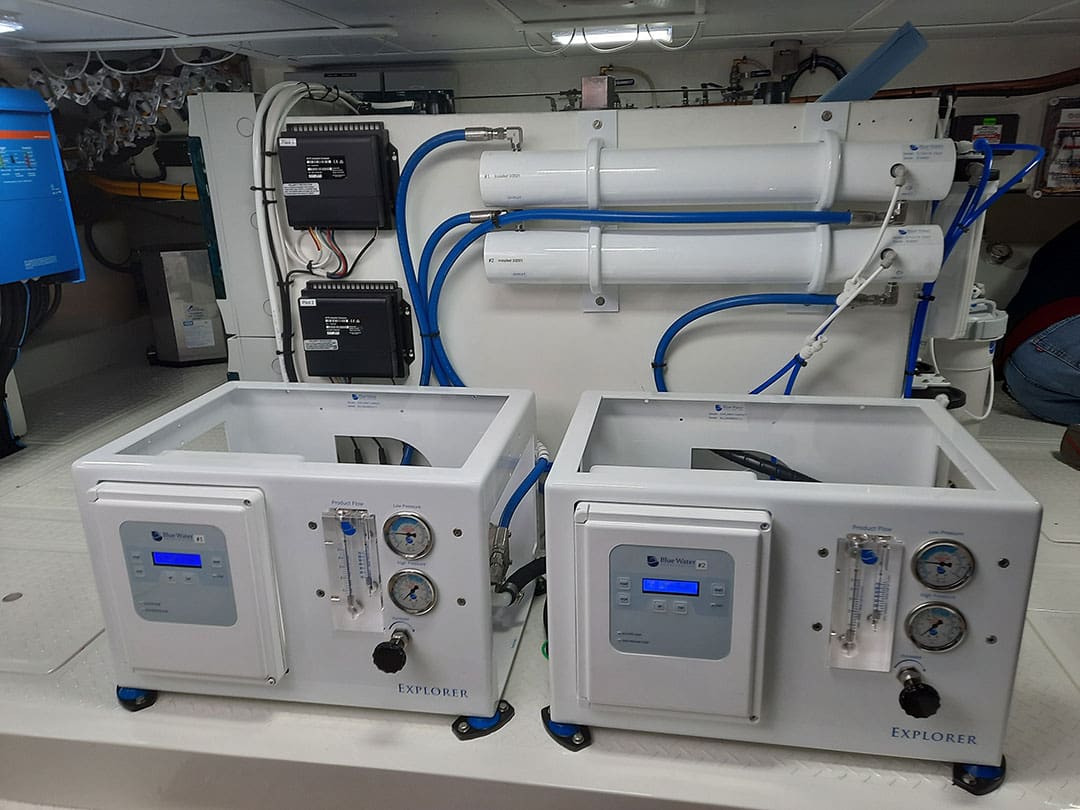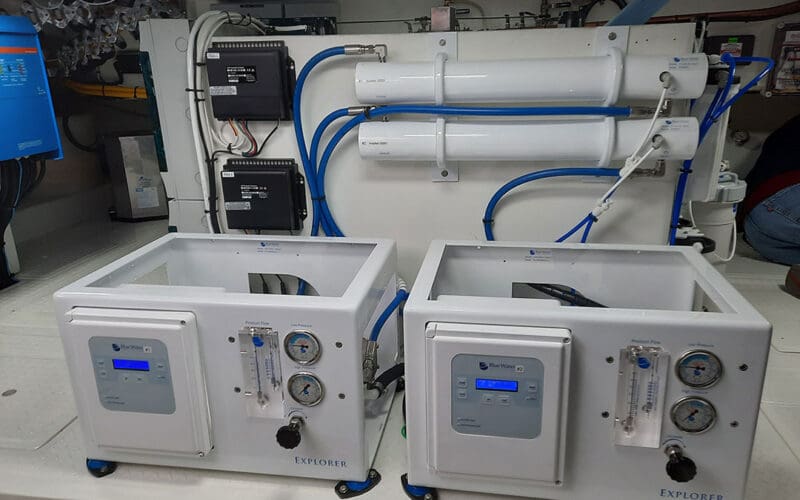
Watermakers have become such a common piece of gear on a power voyaging boat that it seems just about any unit will do. Some buyers take this idea to heart and will purchase their watermaker off the internet based solely on price. The reality, of course, is that there are factors in making sure the watermaker you choose is the right one for the type of voyaging you do. And those factors are not immediately apparent until you start to delve into the subject.
According to Larry Schildwachter of Emerald Harbor Marine in Seattle, which sells and installs watermakers on all kinds of boats, there are a number of things to look at. “We help folks get ready for long distance voyaging,” Schildwachter said. “Many buyers look at watermaker capacity in gallons per day. But we like to start with gallons per hour.” Schildwachter says the latter figure gives a better picture of how a watermaker will fit based on how they want to operate. Another factor is what amount and type of electrical power is available. For sailboats, for example, a DC watermaker usually makes more sense. Power voyagers more often have a diesel generator on board and that makes AC-powered units more attractive. Schildwachter says there are even regional preferences to take into account. “Many people in the Northwest don’t like to run generators. Given that, they need a certain size watermaker because you need to run two hours in the morning and two in the evening.”

Another factor is how much an owner wants to get involved with operating and maintaining their unit. Years ago there wasn’t much choice in this department, all watermakers were manual models with little or nothing in the way of automation. But current models have had most of their functions automated using improved sensor and processing technology. “If an owner is not hands on, we often steer them to more automated models. The automated features help make watermaker operation less difficult. For folks that are really talented, though, they can go any path they want.”
Ask questions
Schildwachter stresses that buying just for the lowest price isn’t always the best way to go. “Folks should be talking to their local dealers. For example, where will you be operating? If you size a watermaker for use in warm water, and then you go in cold water you’ll get a difference in output.”
Some owners really take this relying-on-dealer-knowledge to heart, Schildwachter said. “They come in and quiz us. They ask us what we like, what we’ve heard works well, what hasn’t worked well. And if they’re considering a unit for a Nordhavn, we ask them for the build numbers of their boat and we say here’s the models that go well in those boats. And Nordhavn does a good job of making sure owners are steered in the right direction.”

Berkeley Andrews, sales manager for Blue Water Desalinization, stresses the importance of having a quality unit. “When you go to many places in the world, you put so much on the line — your health and your family’s health.” Andrews said. “Water is not guaranteed to be safe in many of these places. So you want a unit you can trust.”
Part of the trustworthiness of a good watermaker, according to Andrews, are the automatic maintenance features. “We make it easy and all automatic. Like a freshwater flush of the membrane every seven days.”
Another advantage for power voyagers who are likely to have a genset on board and thus can opt to install AC-powered units is that AC pumps are generally simpler than low-power energy transfer device (ETD) DC pumps. “They [AC pumps] are less complex and can be rebuilt in the field in a couple of hours,” Andrews said.
Cost of maintenance
One of the big considerations in any system is not just the cost of acquisition but the cost of maintenance. Mike Spanos founder of Seawater Pro watermakers notes that a good thing to look at is the cost and availability of spare parts. “Are the parts available on line, can you get them from Amazon?” Spanos said. “Can you use off-the-shelf parts? Can you go to the hardware store to find elbows, hoses, those kind of parts to repair your system?” Not surprisingly, Spanos points out that his company’s units are made of standard ISO parts. “When you have universal parts you can fix it.”
What about installing a watermaker? Larger power voyagers often come with a watermaker standard whereas smaller boats require the watermaker to be installed after purchase. For example, the smallest vessel in the Nordhavn line, the 41, does not come with a standard watermaker. Is there a common location on board to install a watermaking unit? Drew Leishman, a project manager at Nordhavn weighed in on this question via email. “The most common location I have seen on the Nordhavn 41 is in the laz,” Leishman wrote. And he stressed that the 41, for example, is already set up to accept such a unit into the fresh water system. “The 41 is pre-plumbed to accept water from a watermaker to the fresh water tank. There is also a dedicated seawater inlet installed as standard.”
What about arranging for a watermaker to be added to the boat as it is being built? Would that change the tankage required? “We do not offer a watermaker to be installed during the build stage,” Leishman wrote. “Typically on the 41 a watermaker is installed after delivery of the boat. If we were to offer installs during the build it would have no bearing in the tank size. The 41 is more of a production boat in our model line and there is no room for any changes to the specified equipment and tankage.”
So, the process of watermaker choice involves a number of factors that power voyagers need to weigh carefully. When you get a system that works for you, though, the benefits are increased voyaging range and greater crew comfort, so a few extra days of research and asking questions of dealers and manufacturers can be worth it. n

